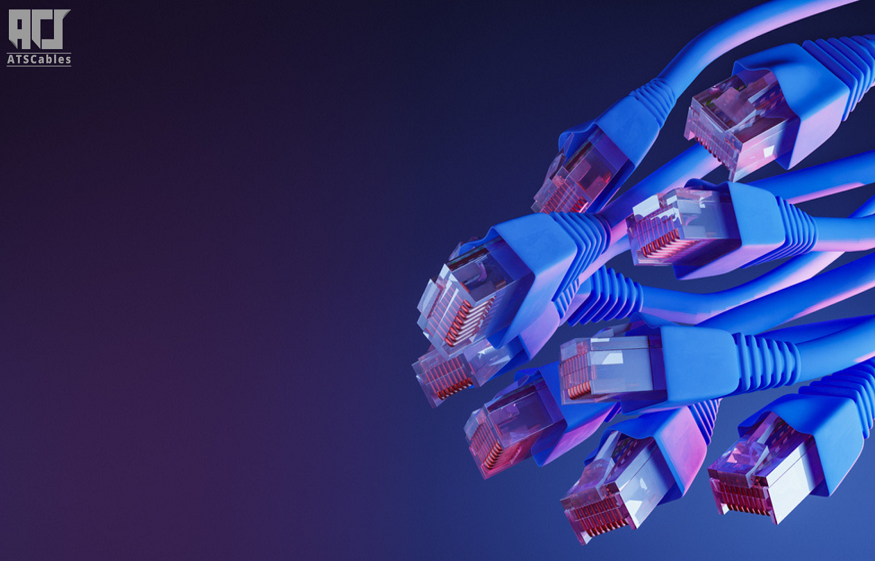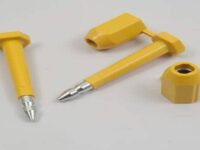What Are The Types Of Ethernet Cable?

What Are Ethernet Cables?
On networks, connections are made via Ethernet cables. They connect network devices so users can relate to the internet. All kinds of cables are available. You can choose the size of Ethernet cable according to your needs. Routers, PCs, and switches are just a few examples of the equipment connected by Ethernet connections to LAN systems.
Coaxial, twisted pair, and fiber-optic cables are the three types most often used for Ethernet cables. Twisted pair cable is still the most common, but fiber-optic cabling is for high-speed networks. For cable Internet connectivity, coaxial cabling is often used. Let’s go over each of the three cable kinds in greater depth.
Types of Ethernet Cables:
The three main types of Ethernet cables are as follows:
Coaxial Cables:The transmission of high-frequency electrical signals across coaxial cables is possible. It lowers EMI (Electromagnetic Interference), and the shielding is coated by a sheath, a type of plastic covering of PVC or another heat plastic material. It’s a 10 Mbps top transmission speed. Cable TV, communications networks, and other devices usually use it.
On the other hand, both thinned and thicket versions of this sort of cabling are available. Twisted-pair cabling has essentially taken on the role of coaxial cabling in computer systems today.
Twisted Pair Cable: A copper wire cable known as a “twisted pair” has two insulated copper wires twisted around one another to lessen crosstalk or interference. It uses 10BASE-T, 100BASE-T, and a few more recent Ethernet variations. RJ-45 connectors are used; four wires make up a twisted-pair cable. To low crosstalk and interference, these wires shield around one another. These cables are frequently for use in modern LANs.
Network and telephone cabling can both with twisted-pair cable. It is available in the UTP (Unshielded Twisted-Pair) and STP versions (Shielded Twisted-Pair). An STP cable has an extra protective layer that shields data from external interferences, making it different from the other two.
Types Of Twisted Pair Cable:
1. Shielded Twisted Pair (STP) Cable: STP provides a layer of protection against noise coming into and out of the wire by shielding the cables with a copper braid or a foil shield. They are for transmission rates over long ranges.
2. Unshielded Twisted Pair (UTP) Cable: In modern computer networks, unshielded twisted pair cable is among the most often used cables. Two insulated copper wires are twisted around each other to form the UTP, which reduces interference.
3. Optical fibers:The third type of ethernet cable is optical fibers. They are used to convey data as signals. Unlike twisted pairs or coaxial cables, fiber optics can send signals over very long distances. As a result, it can transmit data at a rapid rate. Glass strands wrap around the cables by material.
4 .Fiber optic cable:In last, fiber optic cable can support more cable lengths than any other type of cabling. Additionally, resistant to electromagnetic interference are the cables. As you can see, there are several benefits to using cabling
Ethernet Cable Categories
The best ethernet cable must choose because it will be longer, faster, and more suited to your unique requirements. You can, however, choose from the ethernet cabling categories listed below.
Category-5
Compared to the demands of contemporary hardware, cat53 cables are sluggish. Therefore, if your older hardware requires older hardware, you should use this.
Category-5e
Among the most widely used ethernet cable kinds is cat5e CMP bulk. Cat 5e is adaptable enough for small space installations to support rates of up to 1000 Mbps. As a result, residential areas use it frequently. One of the most affordable types of cabling in the industry is cat5e.
Category-6
Cat6 plenum UTP cabling is less flexible because it only supports speeds of up to 10 Gbps and up to 250 MHz. However, this makes it more suitable for industrial settings and less expensive.
Category 7:
To reduce signal attenuation, Cat7 offers considerable shielding. However, the Cat7 cable specification for communication has not been certified.
Conclusion:
In conclusion, these are the types of Ethernet cables that are used nowadays. selecting Cat6a shielded plenum cable over Cat6a shielded plenum cable will lengthen the cabling system’s lifetime by lowering the demand for ongoing aintenance.
If your network infrastructure calls for higher quality tasks like data transfer, audio, video sorting, editing, and so on, Cat 6 or Cat 6a cables are a wise investment. Or if you intend to need faster internet in the future you should buy cat7.






